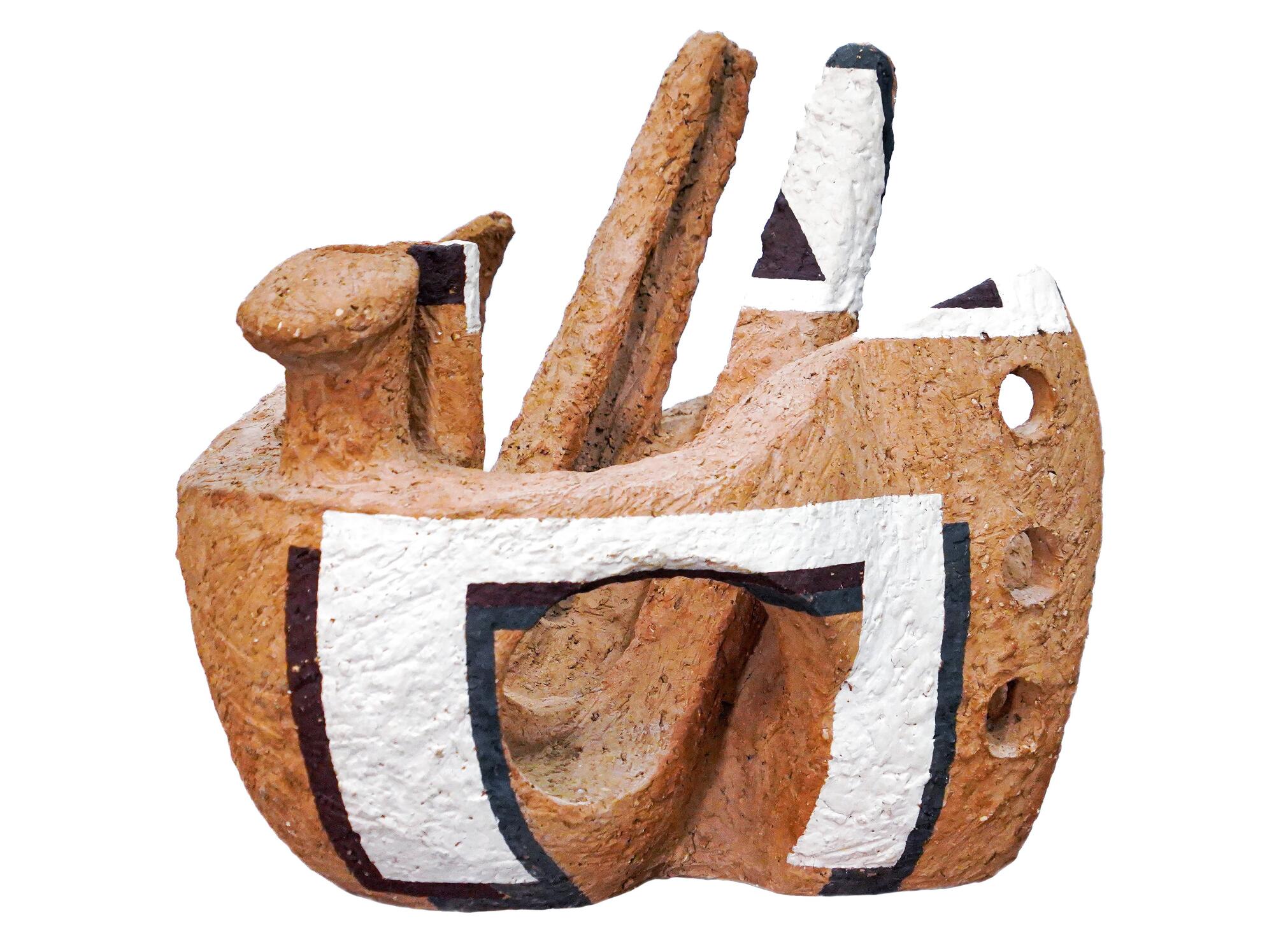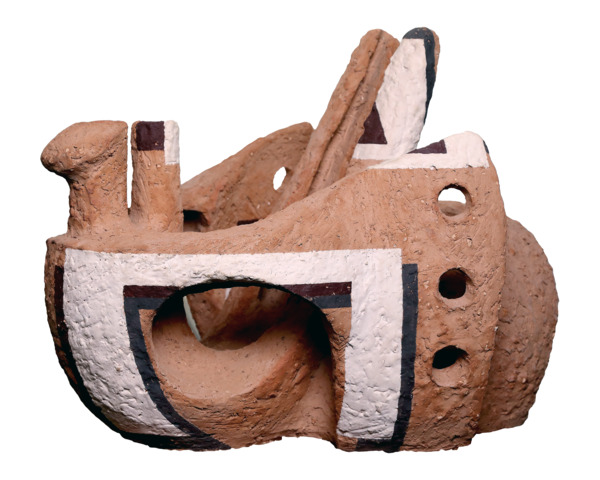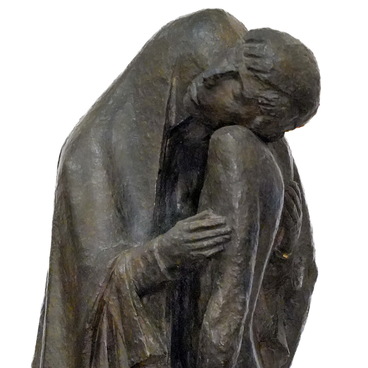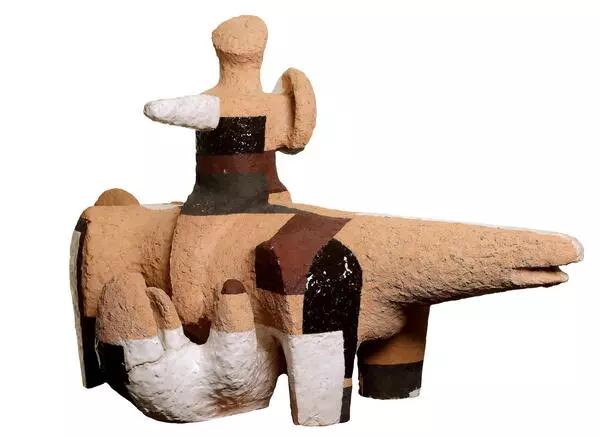The penchant for plastic arts of the Ural artist Yury Krylov applied to both monumental sculpture and smaller works. The plots and motifs in his work often included images inspired by stories of ancient mythology, for example, Leda and the Swan.
This work is made in the technique of chamotte decorated with enamel. The plot of Leda and the Swan produced such a strong impression on the sculptor that he embodied it a few more times in other materials — stone and wood.
In Greek mythology, dark-haired Leda with snow-white skin is the daughter of the Aetolian king. Her beauty inflamed Zeus. He won Leda’s heart by disguising himself as a wonderful white swan.
The story of Leda and the Swan attracted painters with its erotic content and was a recurring theme in the fine arts across different eras. The image was discovered in ancient works of decorative and applied arts, in sculptures and monuments. For example, the ruins of the “House of Leda” in Cyprus revealed a mosaic depicting the love scene, and excavations in Pompeii resulted in finding a fresco with the same plot. There is also a sculpture of Leda from the collection of Cardinal Alessandro Albani and several Roman copies from the Greek original that has not survived and is attributed to the Greek sculptor Timotheus.
The scene of Leda being seduced by the swan was depicted in medieval book miniatures, Renaissance paintings and sculptures, and also found its way into Baroque, Rococo, and Classicism. The plot was used by such famous masters as Leonardo da Vinci, Michelangelo, Raphael, Tintoretto, Titian, Peter Paul Rubens, Paul Cézanne, Salvador Dalí, and others.
The love story of a woman and a bird is also of interest to contemporary artists looking for new ways of interpreting famous images. Yury Krylov is one of those interested: his composition is filled with eye-catching forms that are semi-abstract and not easily recognizable. The work resembles a rough ancient plastic figure. The basics of the plot are observed despite the fact that the erotic nature of the plot is downplayed, and the shapes and dynamics used by the sculptor are different from the generally accepted ones.
This work is made in the technique of chamotte decorated with enamel. The plot of Leda and the Swan produced such a strong impression on the sculptor that he embodied it a few more times in other materials — stone and wood.
In Greek mythology, dark-haired Leda with snow-white skin is the daughter of the Aetolian king. Her beauty inflamed Zeus. He won Leda’s heart by disguising himself as a wonderful white swan.
The story of Leda and the Swan attracted painters with its erotic content and was a recurring theme in the fine arts across different eras. The image was discovered in ancient works of decorative and applied arts, in sculptures and monuments. For example, the ruins of the “House of Leda” in Cyprus revealed a mosaic depicting the love scene, and excavations in Pompeii resulted in finding a fresco with the same plot. There is also a sculpture of Leda from the collection of Cardinal Alessandro Albani and several Roman copies from the Greek original that has not survived and is attributed to the Greek sculptor Timotheus.
The scene of Leda being seduced by the swan was depicted in medieval book miniatures, Renaissance paintings and sculptures, and also found its way into Baroque, Rococo, and Classicism. The plot was used by such famous masters as Leonardo da Vinci, Michelangelo, Raphael, Tintoretto, Titian, Peter Paul Rubens, Paul Cézanne, Salvador Dalí, and others.
The love story of a woman and a bird is also of interest to contemporary artists looking for new ways of interpreting famous images. Yury Krylov is one of those interested: his composition is filled with eye-catching forms that are semi-abstract and not easily recognizable. The work resembles a rough ancient plastic figure. The basics of the plot are observed despite the fact that the erotic nature of the plot is downplayed, and the shapes and dynamics used by the sculptor are different from the generally accepted ones.




